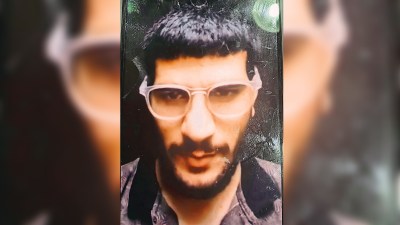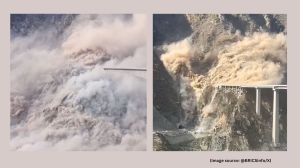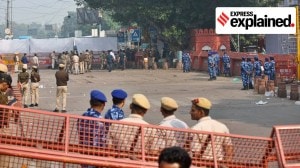"Rajiv is coming to Madras on 30. Attempt at Madras or at Capital?"
NEW DELHI, Dec 16: Could Rajiv Gandhi's assassination have been prevented?The LTTE left considerable evidence of its intentions months befo...

NEW DELHI, Dec 16: Could Rajiv Gandhi’s assassination have been prevented?The LTTE left considerable evidence of its intentions months before the assassination. The incredible part is that the Indian intelligence agencies chose to ignore all the warning signals, either because of connivance, gross incompetence or lethargy.
Curiously, Justice M C Jain has given no clue as to whether anyone has been held accountable for these glaring lapses, while on the other hand, the Jain Commission’s interim report is full of insinuations against political leaders who even by Jain’s own acknowledgment had no direct involvement with the Sriperumbudur blast.
Here are some tell-tale extracts from the commission’s interim report which bring out the criminal negligence on the part of the authorities, yet for which Justice Jain has so far apportioned no blame:
Major General Yashwant Deva, a communication expert of the Indian Army, deposing before the commission has acknowledged: “The assassination could have perhaps been averted.”
Deva told the commission that had “surveillance been mounted on the wireless network, wireless bases located and wireless intercepts decoded” the tragedy could have been avoided.
Two such coded messages, passed between LTTE cadres in Tamil Nadu and LTTE headquarters at Jaffna were intercepted on March 21 and 22, 1991.
The first message stated “Rajiv Gandhi is coming on Madras on 30” the second message stated “(should) attempt at Madras or at the Capital? If in Capital, it requires strenuous efforts and sufficient time. If to attempt on (date) give reply.”
Justice Jain has simply noted the explanation of the IB that, “Unfortunately, none of these messages could be decoded till the assassination.” Considering that the IB had two whole months to do the job, it surely was an extremely weak excuse.
N V Vathsan, then joint director IB, based in Madras, deposing before the commission, said: “All such intercepted messages were sent to IB headquarters for attempt at decoding as we did not have the required expertise at SIB (State Intelligence Bureau) level…the wireless communication were monitored physically and the relevant transactions were recorded on to a tape. Subsequently, the records in the tapes were transcribed on the paper…sent to IB headquarters and they remained unbroken…”
For two months the messages were apparently uncoded even though the Madras IB figured out that the LTTE was planning something major. Vathsan in his testimony acknowledges: “A few months before the unfortunate assassination of Rajiv Gandhi, we noticed quite an increase in the traffic on the intelligence network of the LTTE and as there was no response from the IB headquarters, we were trying our best to study the coded messages ourselves.”
Evidence of the period indicates that during March 1991, fresh wireless sets were installed by the members of the intelligence wing of the LTTE in Madras which were extensively used to pass coded messages to LTTE intelligence headquarters at Jaffna.
The commission concludes that, “The most eloquent commentary on the ineffectiveness of the state police machinery as well as the Central Intelligence agencies is seen in the impunity with which one of the key accused Sivarasan alias Raghuvaran, the one-eyed Jack’ involved in both the Padmanabha assassination case of June 1990 and the assassination of Rajiv Gandhi (May 1991) moved extensively in Tamil Nadu and travelled between Tamil Nadu and Jaffna on numerous occasions.”
The following are a few telling IB reports and messages included in the interim report which make it clear that President’s rule in Tamil Nadu was as ineffective as the DMK government in controlling the LTTE and the much wanted Sivarasan was able to move around freely in Tamil Nadu:
Another intriguing extract from the interim report suggests the possibility of a cover-up during the investigations into the assassination.
That the taped-over part of the video cassette once had evidence of the killers at the site is borne out by a report sent by the then director of IB M K Narayanan to the Prime Minister a day after the assassination. Narayanan made a mention of some video pictures and noted that the video pictures of this part of the meeting are presently being scanned to try and identify the lady.”
SIT chief D R Karthikeyan who investigated the assassination informed the commission that the video cassettes were sent for examination to foreign scientific experts to find out whether they had been tampered with to obliterate any part of the video recording of significance. Karthikeyan told the commission at its final sitting that the outcome of the inquiry was awaited. The commission except for recording this fact, wrote that it “does not propose to say anything further in this connection.”
Apparently, foreign experts take as long as Indian judicial commissions to unravel the truth.






- 01
- 02
- 03
- 04
- 05

























